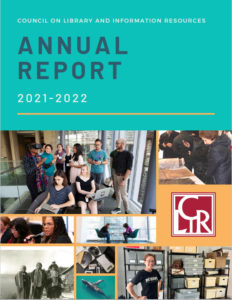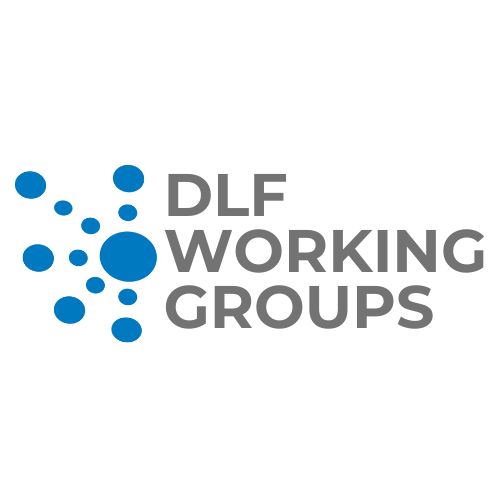I am excited to serve as the next editor of CLIR News. I thank my immediate predecessor, Kathlin Smith, who for more than two decades has worked for the newsletter’s growth and development.
The Council on Library and Information Resources first published CLIR Issues, as it was originally known, in the winter of 1998 to explain the organization’s work and to spark reasoned discussions on important topics in the GLAM professions. I was a sophomore at Johns Hopkins University back then, learning in a scholarly environment that was shifting from print and electronic. Online databases, electronic journals, and web-based catalogs were rapidly changing how students and faculty accessed information. Old buildings on campuses were being adapted, and new library spaces were accommodating technological change. Introductory courses on the Internet covered the World Wide Web, Netiquette and email services, and the rise of e-commerce.
Some campus libraries had websites, but there wasn’t much to them. Yahoo was all the rage, with Java applets and Flash games. “Hampster Dance” emerged as the first animated GIF. MapQuest, not Google Maps, was the go-to spot for turn-by-turn driving directions. And students could order from Pizza Hut via PizzaNet, a simple, grayscale online hub.
In those early editions of the newsletter, I see as I click through them, fundamental questions about technology and cultural preservation were front of mind.
Is technological change an opportunity, a threat, or both? How will digital technology transform contemporary life, scholarship, and course instruction? How will libraries and archives continue to serve the research needs of scholars and students? What methods should be used to convert archival materials to digital formats? Will digitization change the fundamental character of preservation? How should librarians assert their proper role as guides to information and new learning experiences in the electronic environment?
Leading experts shared ideas, techniques, and their practical experience in digital conversion. Partnerships were forged. Among the topics of conversation were public policy, financial investment, and equitable and open access to information, copyright, and intellectual property. The newsletter published reports on preservation projects supported by CLIR, essays, and readers’ views.
By 2001, I had earned a PhD in US history and was working as an enterprise reporter for The Chronicle of Higher Education, in Washington. My reporting focused on graduate education, the adjunct crisis, race and diversity issues, scholarly research, and the rise of the digital humanities.
At the same time, new questions emerged on the pages of CLIR News and from within the broader academic community: How do we acquire platforms for digital archives? Is the traditional dissertation going to die out and be replaced by new publication models? Should libraries continue to buy traditional books while shifting to e-books and paying for other kinds of electronic subscriptions? Is knowledge for the public good, or private gain?
As a journalist, I have long been captivated by important debates like those. As a historian, I appreciate the value of material evidence of historical and artistic significance: written texts, film and audio recordings, historic landmarks, living heritage, natural sites, and intimate aspects of culture (folklore, traditions, language).
As a college professor who teaches digital storytelling, I am driven by the urgency of documenting unheard voices and receding experiences amid global challenges, whether climate crisis or Covid-19 or war and displacement or gentrification or political turmoil. The urgency is all the greater in a rising tide of anti-intellectualism, declining literacy, divestment in higher education, and attacks on truth tellers.
It is against this backdrop that I am motivated to take CLIR News to new heights. We will continue to publish the best content and provide a forum to amplify the global work of CLIR. As editor, I will spare no effort to bring in new voices and ideas while working to embrace the values of diversity and inclusion.
In the coming months, we will publish more perspectives on special topics from scholars and GLAM professionals. We will continue to provide readers with the most updated information on recent advances in the field.
The March/April issue will feature a new layout with more sections, visual flair, and digital stories that will provide readers with a more immersive reading experience.I am happy to hear from you concerning articles, perspectives, highlights, and reports. And I thank the readers and contributors for your invaluable support. I can be reached at spatton@clir.org.
The Council on Library and Information Resources (CLIR) is pleased to announce the publication of Evaluating Equity and Inclusion in Cultural Heritage Grantmaking: CLIR’s Amplifying Unheard Voices Program.
When the Mellon Foundation funded the first iteration of the Amplifying Unheard Voices (DHC:AUV) program in 2020, its officers encouraged CLIR to contract with an external research team to undertake a comprehensive program evaluation. The Foundation’s support gave CLIR its first opportunity to commission a formal assessment of its regranting activities since the launch of the organization’s earliest “hidden collections” call for proposals in 2008.
CLIR subsequently hired Jesse Johnston and Ricardo L. Punzalan to conduct an in-depth documentation review, focus groups with program stakeholders, and more than fifty interviews with applicants. The team’s methods and the results of their investigations are summarized in the report. Their findings will inform CLIR’s future work and will be of interest to other organizations seeking to improve access to rare and unique materials, especially those with the potential to deepen public understanding of the histories of people of color and other communities and populations whose work, experiences, and perspectives have been insufficiently recognized or unattended in the past.
“We note the high enthusiasm for increased support of community-based memory initiatives that will diversify the historical record and make that record more digitally available,” write Johnston and Punzalan. “At the same time, the assessment reveals challenges of funding digitization projects in cultural heritage: the significant time required for design, implementation, and management of multiyear programs; the limitations of project grants; and the challenges of making incremental yet responsive changes within a longstanding program.”
“Look around us: consider today the stultifying pressure, loud and angry, to rewrite history from a single perspective, to privilege an exclusive, leeched, and recumbent narrative of our collective legacy. It is core to CLIR’s mission to assure that we work diligently to mitigate these constraints by listening to, sharing, and sustaining the elegant variety of voice and vision that inspirit our communities: the chorus that Hidden Collections strives to amplify, and the new report confirms,” said CLIR president Charles Henry.
The report is freely available on CLIR’s website at clir.org/pubs/reports/dhc-auv-assessment.
CLIR is now accepting applications from collecting organizations for the digital reformatting of audio and audiovisual materials through the Recordings at Risk grant program. Generously funded by the Mellon Foundation, Recordings at Risk is focused on digitally preserving “at-risk” recorded content of high importance to researchers and the general public.
CLIR will award grants of between $10,000 and $50,000 for digital reformatting projects that will take place between September 1, 2023, and August 31, 2024.
The application deadline is April 19, 2023. Awards will be announced in August 2023.
 CLIR envisions a world in which information and cultural heritage are preserved, accessible, useful to—and reflective of—all people. Our 2021-2022 annual report, now available for download, shares how we are working to make this vision a reality.
CLIR envisions a world in which information and cultural heritage are preserved, accessible, useful to—and reflective of—all people. Our 2021-2022 annual report, now available for download, shares how we are working to make this vision a reality.
The Baltimore Museum of Art’s (BMA) Board of Trustees appointed CLIR Board member Asma Naeem as the museum’s new director. She is widely recognized for her advocacy of women and underrecognized artists, for her scholarship in contemporary and American art, and for her vision and work in collections diversification. She succeeds Christopher Bedford, who served as director from 2016 until 2022. Naeem began her new role as the BMA’s Dorothy Wagner Wallis Director on February 1, 2023, becoming the first person of color to lead the institution. Click to read the full announcement of Asma Naeem’s appointment.
Registration is now open for both the DLF Forum and NDSA virtual sessions. These special online gatherings will feature presentations that were accepted in both 2022 event programs, but were not able to be presented in person. All sessions are free and open to the public. Click the following links to learn more about the sessions and how to register.
DLF Forum Virtual Sessions, sessions start April 13, 2023
NDSA Virtual Event, all sessions on February 23, 2023
Registration is now open for the IIIF Annual Conference in Naples, Italy, June 5-7. The event is intended for a wide range of participants, including digital repository managers, content curators, software developers, scholars, and administrators at libraries, museums, cultural heritage institutions, software firms, and other organizations working with digital images and audio/visual images. Registration details can be found on the conference website.

The 2023 IIPC Web Archiving Conference and General Assembly will take place at the Netherlands Institute for Sound & Vision in Hilversum, the Netherlands from 10-12 May, with an online day of sessions on May 3. This year’s conference is co-hosted by the Netherlands Institute for Sound & Vision and KB, National Library of the Netherlands. This annual event brings together world experts in web archiving and is intended for a wide audience including archivists, curators, software developers, researchers, and anyone interested in working with digital content. The 2023 program celebrates 20 years of IIPC, and will be IIPC’s first return to an in-person conference since 2019. Registration will open on February 15 , and more details can be found here.

February 22, 2023, 2 pm ET – Join DLF’s newest working group, Technology Strategy for Archives Working Group (TS4A) for its first meeting of the new year. TS4A is a community of practice organized through DLF focused on supporting archives and technology workers, management, and leadership. The group will discuss potential topics of focus for the year and determine any TS4A affinity groups or subgroups to organize. TS4A is open to anyone interested in these topics regardless of formal role, experience, or institutional affiliation. Register in advance for call-in information.
ISSN 1944-7639
Content is not copyrighted and can be freely distributed